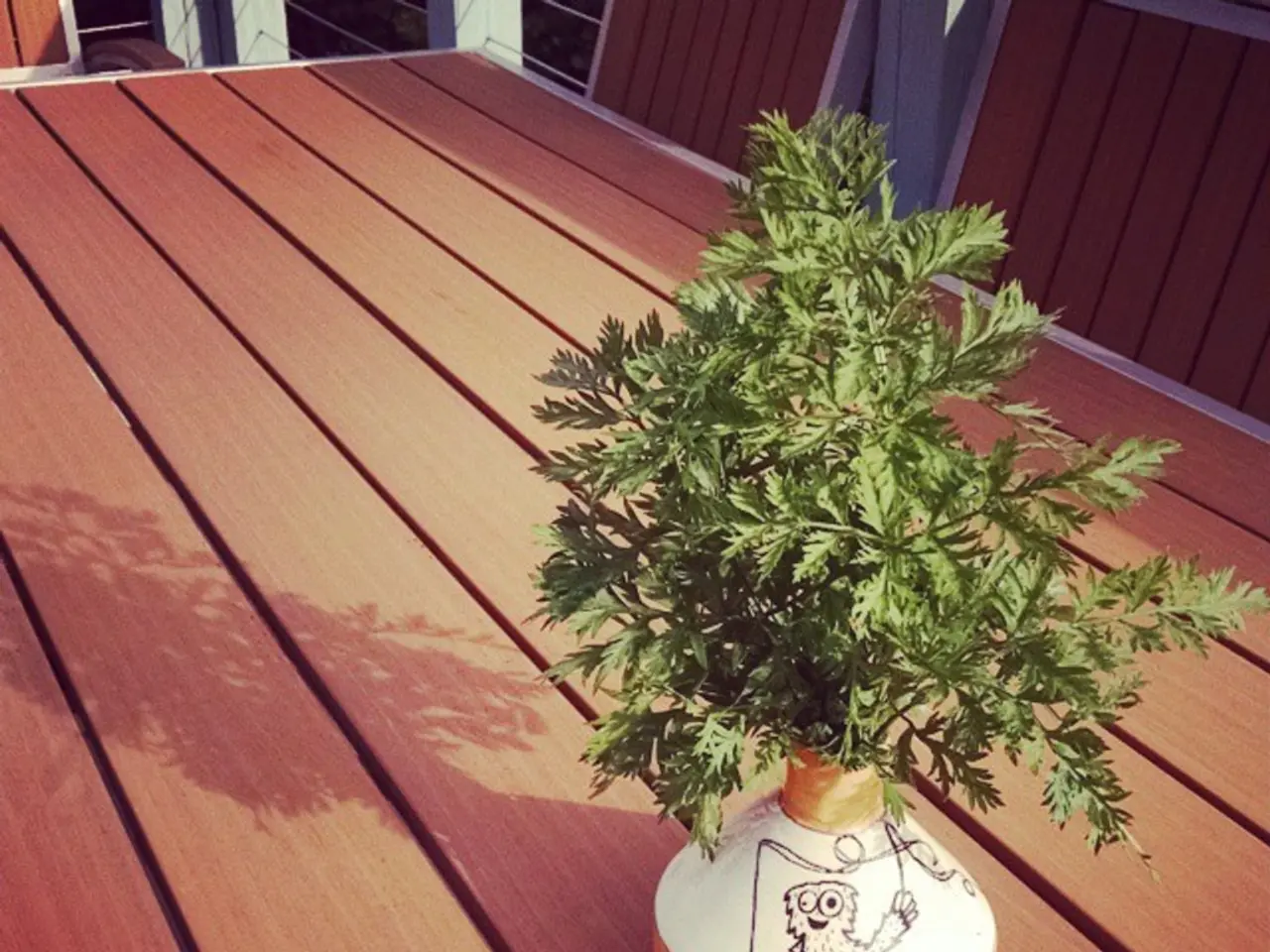Remedies and Solutions for Soil Infection in Plants: Overcoming Mold Problems
In the world of houseplants, mould can be a common and unwelcome sight. This article aims to provide a comprehensive guide on identifying different types of mould found in houseplant soil, understanding their impacts, and learning effective methods to prevent and treat them.
Mould thrives under moist, poorly ventilated conditions typical of overwatered or compacted soil. Common types of mould include saprophytic fungi, yellow mould (Aspergillus flavus), and various other moulds like Cladosporium and Aspergillus species.
- Saprophytic Fungi appear as a fuzzy layer on the soil surface and indicate conditions like overwatering or poor drainage, which can lead to root rot. For humans, exposure can cause mild allergic reactions, especially in sensitive individuals or with prolonged exposure in poorly ventilated areas.
- Yellow Mould (Aspergillus flavus) often appears as yellowish-green or yellowish-brown powdery or fuzzy patches in warm, humid environments like plant soil. It can cause allergic reactions, respiratory issues, and in rare cases, serious infections such as aspergillosis. Preventing its growth involves controlling moisture and improving airflow in soil and indoor spaces.
- Other Common Fungi like Cladosporium and other Aspergillus species can also colonize houseplant environments, favored by moisture and warmth. For agricultural crops, specific moulds such as Passalora fulva cause leaf mold, with symptoms on leaves and occasionally fruit, spreading through spores in humid conditions.
To prevent mould from returning, one should avoid overwatering, use a well-draining potting mix, pick the right pot, improve air circulation, remove dead plant material, and increase sunlight exposure. Ensuring proper ventilation in a home can help remove air pollutants and enhance air quality for plants. Using a fan can help circulate air around plants and prevent dampness and condensation.
Exposing soil to sunlight is an effective way to kill mould, as UV-C ultraviolet light can destroy and eliminate mould and other germs. Regular pruning helps remove dead leaves and improve air circulation around plants. Providing space around plants allows for light breezes and fresh air to reach them from all sides.
When mould does appear, it's important to act quickly. To remove mould from plant soil, one can scrape it off, use a fungicide, or replace the soil. For severe cases of mould, such as black mould caused by the fungus Stachybotrys chartarum, which can be harmful to humans and pets if inhaled, it may be necessary to discard the affected plant and soil.
Rotating plants ensures that all parts of the plant receive adequate light and airflow. Using plant stands can help create more space around plants and improve air circulation. Remember, the main concern is not the mould itself but the environmental conditions encouraging it, which can harm plant roots and cause mild to severe allergic reactions in humans.
By understanding these moulds and their impacts, houseplant enthusiasts can create a healthier, mould-free environment for their plants and themselves.
References:
[1] University of California Agriculture and Natural Resources. (2021). Houseplant Moulds. https://ucanr.edu/sites/mold/Mould_on_Houseplants/
[2] Michigan State University Extension. (2020). Common Moulds in Houseplants. https://www.canr.msu.edu/news/common_moulds_in_houseplants
[3] Mayo Clinic. (2021). Aspergillosis. https://www.mayoclinic.org/diseases-conditions/aspergillosis/symptoms-causes/syc-20375974
[4] Centers for Disease Control and Prevention. (2021). Aspergillus. https://www.cdc.gov/fungal/diseases/aspergillosis/index.html
- Prolonged exposure to Saprophytic Fungi, common in overwatered or poorly drained indoor plant soil, can cause mild allergic reactions in sensitive individuals, especially in poorly ventilated areas.
- Houseplant enthusiasts can encounter Yellow Mould (Aspergillus flavus), which appears as yellowish-green or yellowish-brown powdery or fuzzy patches in warm, humid plant environments, causing allergic reactions and respiratory issues.
- In addition to Yellow Mould, other common moulds like Cladosporium and various Aspergillus species can also be found in houseplant soil, favored by moisture and warmth.
- Preventing mould growth involves proper science in understanding houseplant requirements and using techniques for health-and-wellness, such as improving airflow and soil health, controlling moisture, and using a well-draining potting mix.
- Skin-care and medicare are also important aspects to consider when managing indoor plants, as severe cases of mould, such as black mould caused by Stachybotrys chartarum, can be harmful to humans and pets if inhaled.
- Lifestyle changes like increasing sunlight exposure, using fans for better air circulation, and rotating plants can create a mould-free environment that promotes plant health while benefiting home and fashion-and-beauty by improving air quality.
- By adopting a comprehensive approach that includes understanding mould types and their impacts, appropriate nutrition for plants, and a clean and fresh home-and-garden environment, houseplant enthusiasts can enjoy their hobby while maintaining a healthy lifestyle.




